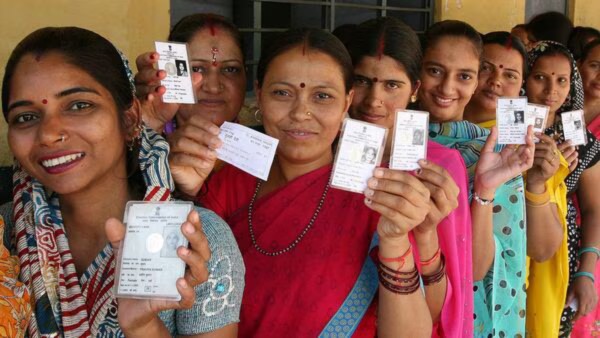
- Home
- About
- Knowledge Center
- Legislative Landscape
- Resources
- #TOGETHERFORBHARA
On March 8th, the world celebrated International Women’s Day, a day dedicated to honoring the invaluable contributions of women globally. As the world celebrated that day, India stood at the forefront of a transformative journey, transitioning from women’s development to women-led development.
India boasts significant strides in women’s representation and empowerment across various sectors, setting an example for the world. Currently, India is among the 15 countries globally with a woman as the Head of State. Moreover, the country leads in the absolute number of elected women representatives in local governments, emphasizing grassroots empowerment. The Gross Enrollment Ratio (GER) of girls in primary and secondary education nearly matches that of boys, reflecting progress in educational equity.
Crucially, India has witnessed positive trends in gender balance indicators, such as the Sex Ratio at Birth (SRB), which has shown improvement (increased from 918 to 933 at national level during 2014-15 to 2022-23), reflecting changing societal attitudes towards the girl child. Government initiatives like “Beti Bachao Beti Padhao” have been instrumental in altering mindsets and enhancing the status of girls in society.
Efforts to boost women’s participation in various professions have been reinforced through strategic interventions and legislative measures. Schemes like Skill India Mission focus on enhancing the employability of female workers, providing training through dedicated institutes. Furthermore, landmark legislative amendments, like the Nari Shakti Vandan Adhiniyam, reserve one-third of seats for women in legislative bodies, ensuring greater political representation.
In STEM fields, where women have been traditionally underrepresented, India has taken proactive steps to bridge the gap. The presence of girls/ women in Science, Technology, Engineering and Mathematics (STEM) is 43%, which is one of highest in the world. Initiatives like Vigyan Jyoti and Overseas Fellowship Scheme aim to increase the participation of girls in science and technology. Notably, women scientists have played pivotal roles in ground-breaking missions like India’s Mars Orbiter Mission (Mangalyaan).
The government’s commitment to women’s empowerment extends beyond traditional sectors to encompass areas like agriculture and rural development. Schemes like the National Rural Livelihood Mission (DAY-NRLM) empower millions of women through self-help groups, fostering economic independence and rural development.
Moreover, financial inclusion initiatives, housing schemes, and agricultural welfare programs prioritize women’s participation, recognizing their pivotal role in decision-making and economic development. Nearly 40 million houses approved through the Pradhan Mantri Awaas Yojana are registered under women’s names. This trend signifies a significant rise in women’s involvement in financial decision-making. The “Vocal for Local” initiative plays a crucial role in empowering women, given that many local products are primarily managed and controlled by women, highlighting their economic influence and autonomy.
In the realm of governance and security, India has taken significant strides to increase women’s representation. Policies granting permanent commission to women in the armed forces and initiatives to increase their participation in civil services underscore the government’s commitment to gender equality. Furthermore, efforts to enhance diversity and inclusion in sectors like aviation through industry-wide initiatives and waivers for female candidates reflect a broader societal push towards gender parity.
On 21 September 2023, Indian legislators passed the Women’s Reservation Bill, 2023. The bill, which passed both houses of Parliament almost unanimously. This will ensure that women occupy at least 33 per cent of the seats in state legislative assemblies and the Lok Sabha, the lower house of Parliament. At the time of the bill’s passage, about 14 per cent of Lok Sabha legislators were women that represents India’s highest proportion since its independence.
As India celebrates International Women’s Day, these initiatives underscore the nation’s unwavering commitment to women’s empowerment and governance. By harnessing the potential of its women, India strides confidently towards a future where gender equality is not just a goal but a reality, driving inclusive and sustainable development.